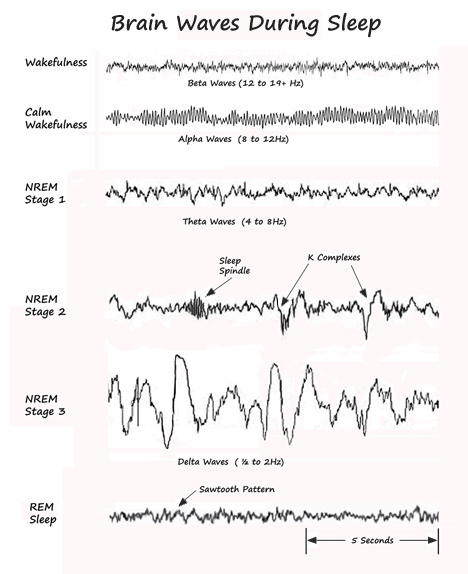How Sleep Works
A Guided Tour
What happens to us when we sleep? What goes on inside our minds and bodies in those mysterious eight hours? Where does our consciousness go — all the minute-by-minute thoughts, perceptions, and self-awareness that make us who we are? What is the true source of our dreams?
The answers to these questions may surprise you. Over the last half-century, science has made great strides in our understanding of sleep. Technological advances, such as the ability to monitor brain wave activity, have made it possible to see what the brain is up to during sleep, revealing a world that was once totally hidden from us — in many ways, a world we didn’t even know existed.
The old notion of sleep as essentially a state of inactivity and nothingness — the body and mind in the “Off” position — has been put to rest by modern sleep science. Today we know that sleep is really a dynamic, multifaceted process, actively initiated and closely controlled by the brain. In fact, sleep is infinitely stranger, more complex, and more fascinating than most people would ever imagine.
Two Very Different Kinds of Sleep
As we go in for a closer look at this strange world, the first thing we notice is that it exists in not one but two distinct forms. Scientists divide sleep into two fundamental “states” called REM sleep and Non-REM sleep.
REM, as in Rapid Eye Movement, was first discovered in 1952. The name refers to the rapid, jerking movement of the eyes underneath closed eyelids which takes place 4 to 6 times a night, in regular episodes lasting up to 60 minutes at a time. This is a normal part of healthy sleep in humans and is seen in many animals as well. But there’s much more to REM than just fluttering eyes.
During an episode of REM, you lie completely motionless and appear to be sound asleep, but your brain has very curiously switched itself on, almost as if it were awake. It’s in this state that we do most (if not virtually all) of our dreaming. It’s thought that REM sleep may be particularly vital to the maintenance of mental performance, such as the processing and integration of new experiences and memories. About 25% of your night’s sleep is spent in this state.
The other 75% of sleep is, of course, Non-Rapid Eye Movement (Non-REM or NREM). During NREM, the muscles throughout your body become extremely relaxed and your metabolism decreases. The activity of your brain slows down substantially. You lie fairly still, with some occasional limb movement and body shifting. We are said to do very little dreaming here.
NREM itself can be broken down into three distinct “stages” of sleep, which scientists simply label stages 1 through 3. (There used to be four stages of NREM until a 2007 revision in terminology by the American Academy of Sleep Medicine simplified it down to three.) Each stage is a kind of stair-step down to a deeper form of sleep. Stage 1 is a shallow, drowsy half-sleep, Stage 2 is a light but steady sleep, and Stage 3 is deep sleep. These stages are each marked by their own signature brain wave patterns. Non-REM sleep seems to play an important role in maintaining the health and energy of the body, especially in the deep sleep of Stage 3, where much cell growth and the restoration of damaged tissue takes place.

Brain waves are a real-time graph of the electrical activity of the brain, the result of billions of neurons firing together in various rhythmic patterns. These patterns tell us a lot about what’s going on inside the brain at any given time. Scientists look at the brain wave’s frequency — the speed, if you will, at which the wave travels — measured in Hertz (Hz), with 1 Hz equivelent to 1 cycle per second. They also note the wave’s amplitude, i.e. its strength or height.
To say that REM and Non-REM are the two basic states of sleep doesn’t quite express how really different they are from one another. In fact, they’re so radically different that scientists consider our existence to be divided not just two ways — between sleep and wakefulness — but into three fundamental behavioral states: Wakefulness, REM sleep, and Non-REM sleep.
Each night we pass through the three stages of NREM sleep and in and out of the REM state several times, in a series of periodic cycles that follow a remarkably precise pattern. Each sleep cycle lasts from 90 to 110 minutes, and in an eight hour night, we may have four, five, or six of them.
To see how this works, we want to look at sleep from a whole new angle. Using hard science as our guide, we’ll take a tour through a typical night of sleep, through all its various stages, experiencing it from a kind of sleeper’s-eye view. When we wake up, we’ll have a whole new understanding of what sleep is.
